Do you wonder if Munchkin Cats are really hypoallergenic? Perhaps you’ve seen these cute, short-legged cats in videos. Despite their unique looks, Munchkin Cats can trigger allergies like other cats. They shed the allergen Fel d 1, causing issues for some people. So, if you’re thinking of getting one and you’re worried about allergies, it’s important to be informed. Knowing all about Munchkin cat allergies can help prevent surprises like sneezing and runny noses.
Key Takeaways
- Munchkin Cats are not hypoallergenic despite popular belief.
- They produce Fel d 1, an allergen found in skin, saliva, and urine.
- Low shedding does not equate to being allergen-free.
- Individuals sensitive to cat allergies should exercise caution.
- Understanding Munchkin cat health issues is crucial for potential owners.
- Direct interaction and allergy testing can help determine reactions.
Understanding Munchkin Cat Allergies

Munchkin Cats are often thought to be safe for those with allergies. But, the truth is not so simple. These cute, little Munchkin Cats still carry allergens, and we need to know about it.
Hypoallergenic Myth Debunked
Many think Munchkin Cats are totally safe for allergy sufferers. Unfortunately, that’s a myth. The protein Fel d 1, known for most cat allergies, is still an issue. Although they shed less, they are not allergen-free. Prospective owners should expect some level of allergy issues, despite their breed’s reputation.
Common Allergens Involved
It’s key to understand the specific allergens involved with Munchkin Cats. The main problem is the Fel d 1 protein, found in their saliva, skin, and urine. It can still enter your home, even with less shedding. Knowledge of these allergens is important for anyone sensitive to them.
| Allergen | Source | Tips for Managing |
|---|---|---|
| Fel d 1 Protein | Saliva, Skin, Urine | Regular grooming, frequent cleaning, air purifiers |
| Dander | Skin Flakes | Hypoallergenic wipes, bathing |
| Saliva | Self-Grooming | Immediate handling and washing of hands post-petting |
Remember these tips and add them to your routine. Regular grooming and cleaning make living with a Munchkin Cat more enjoyable for everyone.
What Are the Most Common Allergies in Munchkin Cats?
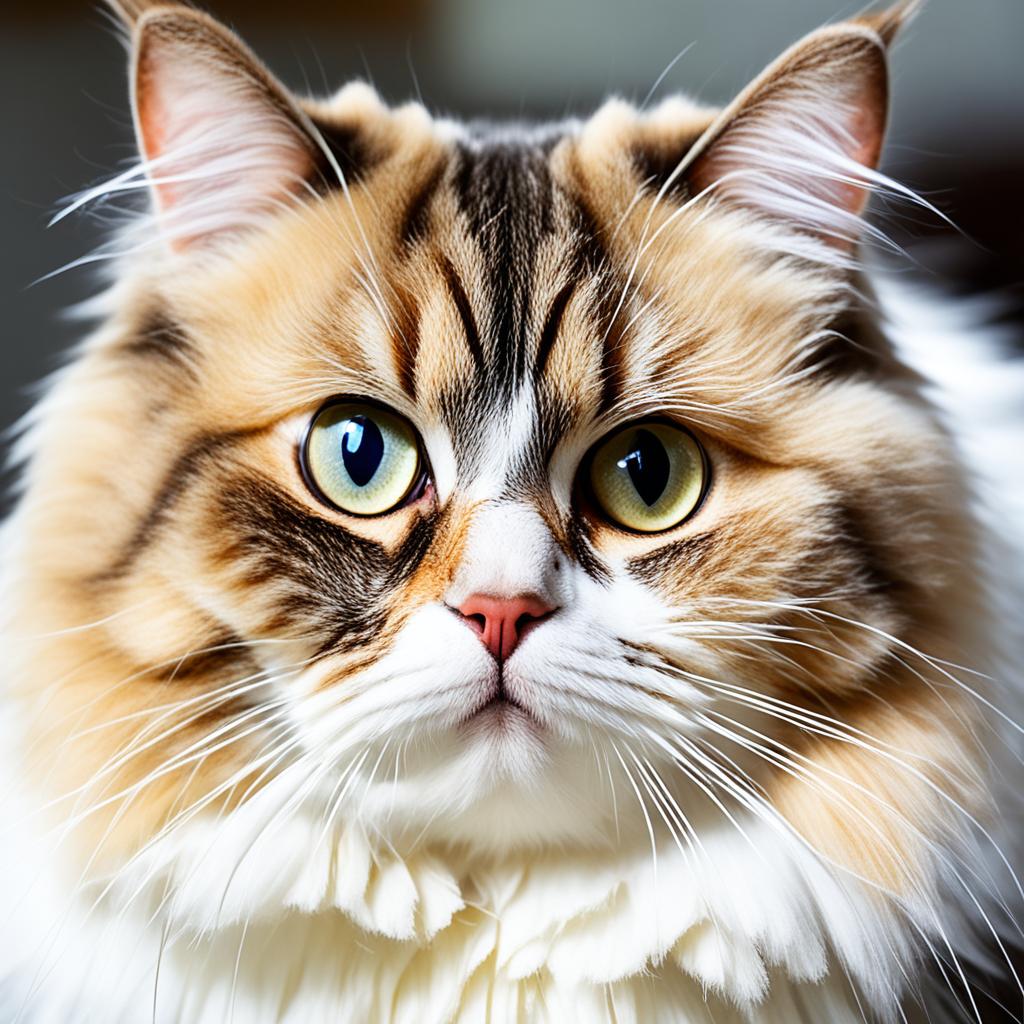
Allergies bother Munchkin cats just like they do people. These allergies can be from their environment or their food. Knowing the top allergies in Munchkin cats is key to keeping them happy and healthy.
Environmental Allergies
Munchkin cats often have allergies to their environment. This includes things like pollen, mold spores, and dust mites. A cat with these allergies might have itchy skin or trouble breathing.
It’s important to find and deal with these triggers. This can really help your Munchkin feel better.
- Pollen: Seasonal allergies can make your cat sneeze and itch.
- Mold spores: They can cause breathing problems and lots of sneezing.
- Dust mites: Found in dust, they can make your cat very uncomfortable.
Food Allergies
Munchkin cats can also have food allergies. These are usually because of certain proteins in their diet. Symptoms can be mild stomach issues or serious problems like inflammatory bowel disease.
| Type | Potential Allergens | Symptoms |
|---|---|---|
| Proteins | Beef, chicken, fish | Digestive upset, itchy skin |
| Grains | Wheat, corn, soy | Inflammatory bowel, chronic gas |
| Preservatives | Artificial flavors, colors | Gastrointestinal issues, skin irritation |
Watch your cat closely for allergy signs. Catching and treating these issues early can keep your Munchkin healthy. Dealing with environmental and food allergies ensures your kitty enjoys its home.
Munchkin Cat Fur Allergies
Munchkin cats are known for their small size and cuteness. But they also have a protein called Fel d 1 in their fur. This protein can cause allergies in some people. Even though Munchkin cats don’t shed much, their fur can still bother those with allergies. So, how can you enjoy your Munchkin cat without sneezing?
- Regular grooming sessions are essential to rid the fur of allergens.
- Frequent vacuuming of your home helps manage stray hairs and dander.
- Air purifiers can reduce airborne Fel d 1 exposure.
Follow these steps to reduce allergy problems with your Munchkin cat. Grooming regularly and vacuuming often help. Also, using an air purifier can make the air cleaner. This way, you can lower the amount of Fel d 1 in your home.
Munchkin Cat Skin Allergies

Munchkin cats, like people, can get skin allergies. These Munchkin cat skin allergies are mainly feline dermatitis. They can be caused by many things, like fleas, environmental things, and even certain foods.
How do you know if your Munchkin cat has these allergies? Watch for signs like lots of scratching, losing hair, and red skin. These cats often try to scratch their itches, which makes things worse.
Now, let’s talk about what might be making your cat’s skin issues worse:
- Flea Bites: Fleas often lead to feline dermatitis. The saliva from flea bites can really bother some cats.
- Environmental Irritants: Things like dust mites, pollen, and mold can cause allergy issues. Your cat’s surroundings may have a lot of these.
- Dietary Triggers: Some food ingredients, like certain proteins, can cause allergies. This makes Munchkin cats scratch and itch.
Take a look at this chart to see the signs and causes of skin allergies:
| Allergy Cause | Symptoms | Common Triggers |
|---|---|---|
| Flea Bites | Scratching, Red Bumps | Flea Saliva |
| Environmental Allergens | Hair Loss, Skin Inflammation | Dust Mites, Pollen, Mold |
| Dietary Allergies | Itching, Dermatitis | Certain Proteins |
Understanding these symptoms and causes is key to helping with Munchkin cat skin allergies. By being careful and acting quickly, you can make your cat’s life much better.
Signs of Allergies in Munchkin Cats

Spotting allergies in your Munchkin cat is crucial for their health. Watch for behavior changes and physical signs. This can help you notice allergies early.
Behavioral Changes
Keep an eye on how your Munchkin cat acts. Signs include more scratching or licking, less play, and avoiding places. These hints could mean they are allergic to something.
Physical Symptoms
Allergies show both in how a cat behaves and physically. Be alert for things like red skin, sneezing, or tummy issues. It’s important to act fast to keep your cat cozy and healthy.
| Behavioral Changes | Physical Symptoms |
|---|---|
| Increased Scratching or Licking | Red, Inflamed Skin |
| Changes in Activity Levels | Sneezing and Coughing |
| Avoidance of Certain Areas | Gastrointestinal Issues |
Taking early action against cat allergies means better care for your Munchkin. This will lead to a joyous and long life for your pet.
How to Test for Allergies in Munchkin Cats
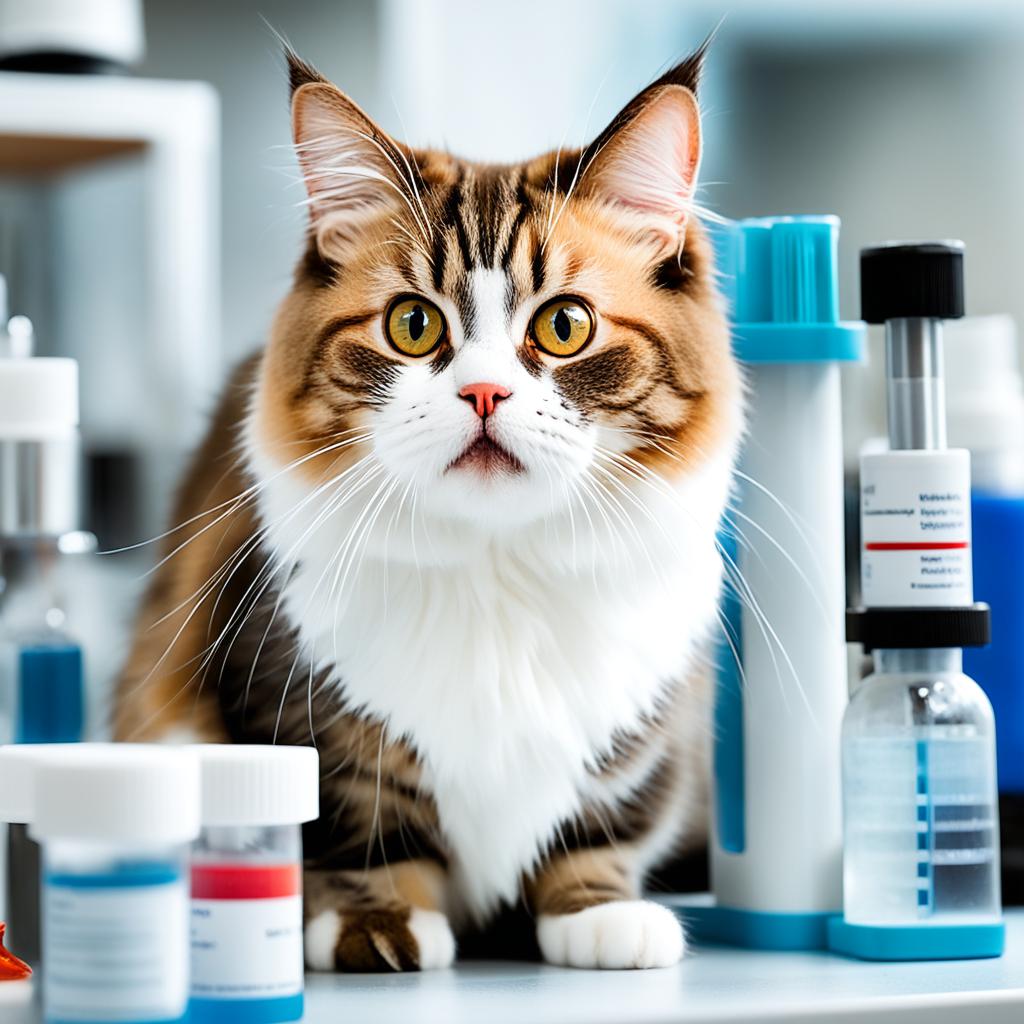
Finding out if your Munchkin cat has allergies involves two steps. First, your vet will run tests. Then, you’ll keep an eye on your cat at home. Both of these steps are key to a solid diagnosis and the right care.
Veterinary Allergy Tests
Your vet plays a big role. They use special tests to find out what’s making your Munchkin cat sick. These tests can be on blood or through skin checks. Knowing the exact allergen helps to treat your cat better and make them feel good again.
Home Observation Tips
At home, you become a detective. Watch how your cat acts around possible allergens. Try different foods, keep things clean, and watch for any bad signs. This step, combined with the vet’s tests, makes sure you catch all possible allergies.
Managing Munchkin Cat Allergies at Home
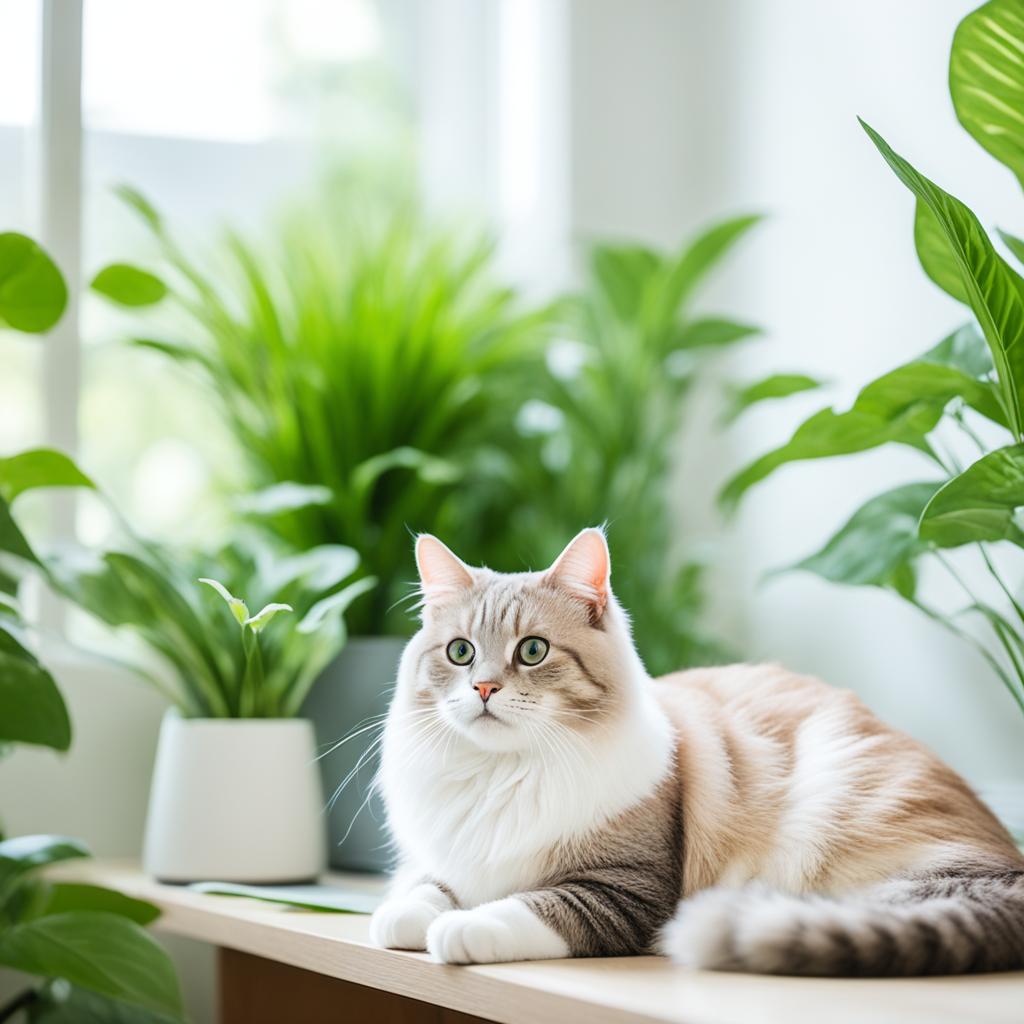
Keeping your home safe from cat allergies is key for you and your Munchkin. It involves simple steps that can make a big difference. Clean often to lower cat allergens at home. This means dusting and vacuuming to remove dander. Getting an air purifier will help clean the air even more.
You should also set some rules in your home. Keep cats out of certain areas, like bedrooms, to maintain these areas allergen-free. This action creates safe spaces for you.
“Frequent washing of your cat’s bedding and toys can significantly cut down on allergen exposure.”
Using anti-allergen sprays is another good step. Apply them where your cat loves to lie to lessen allergens. This can boost your plan to fight cat allergies at home.
Don’t forget about grooming your cat. Regularly brushing them gets rid of loose fur and dander. This stops allergens from spreading and strengthens your bond with your pet.
- Maintain a stringent cleaning routine.
- Use air purifiers to improve air quality.
- Limit your Munchkin cat’s access to specific areas.
- Wash your cat’s bedding frequently.
- Apply anti-allergen sprays.
- Regular grooming sessions.
Using these tips will help you manage your cat’s allergies. They’ll also reduce allergens in your home. A clean and safe space for you and your cat is within reach.
Effective Treatments for Munchkin Cat Allergies
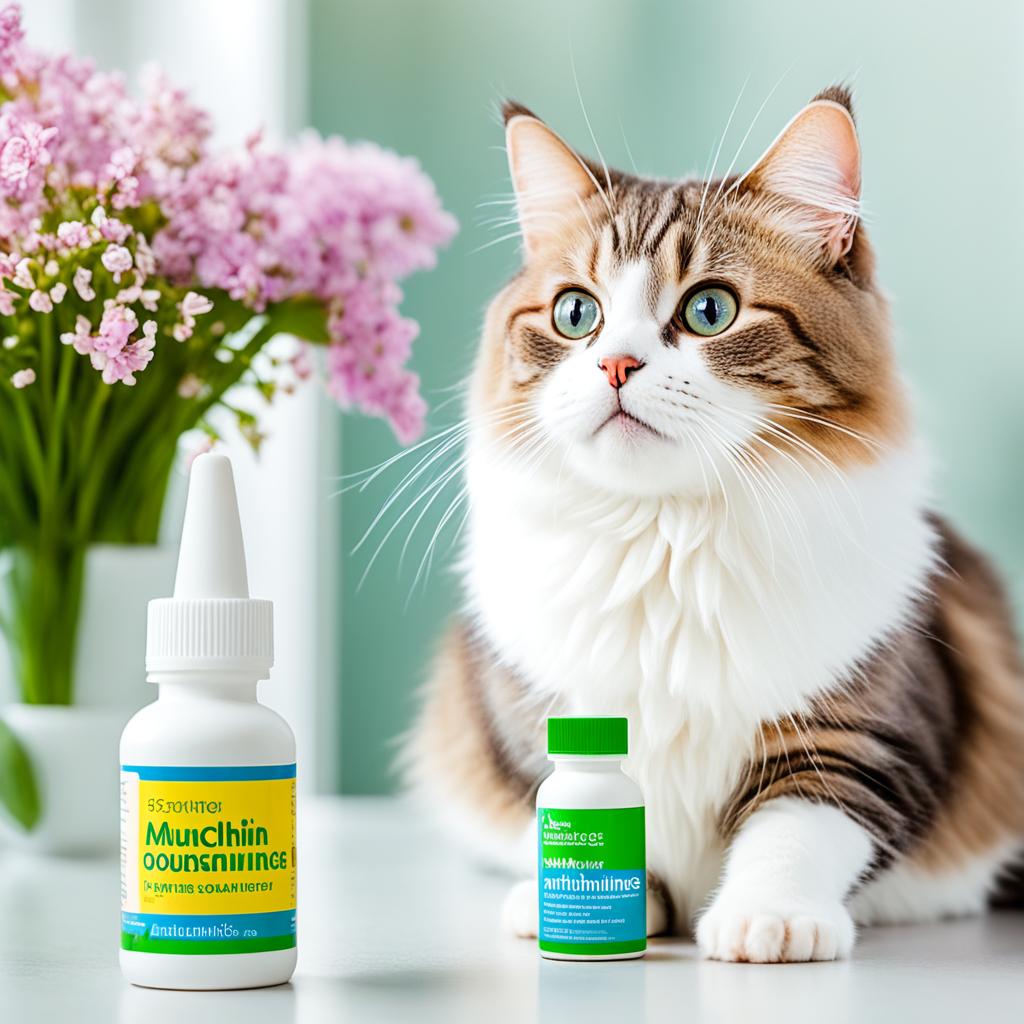
When your Munchkin cat has allergies, you need a comprehensive plan. This keeps your cat healthy and happy. After being diagnosed, you can explore many ways to treat the symptoms.
Medications
Feline allergy medications are a key part of treatment. Vets may give antihistamines or corticosteroids. These drugs fight inflammation and calm allergic reactions. They help your cat feel better and avoid serious health issues.
Diet Changes
Changing your cat’s diet can also work wonders. If allergies to food are the issue, try an elimination diet. This diet finds and removes the allergic ingredients. Then, switching to special hypoallergenic cat food can help keep symptoms at bay. Plus, it supports your cat’s overall health.
Preventing Allergies in Munchkin Cats

Start with setting up allergen-resistant bedding for your Munchkin cat. This and using HEPA air filters can be huge. They help keep your home free of allergy-causing particles. Also, feeding your cat hypoallergenic food is key to keeping allergies at bay.
Regular grooming reduces dander inside your home. And, don’t forget to take your cat to a vet regularly. This helps catch and handle allergies early. By following these tips, you’ll make your home a great place for you and your Munchkin cat.
Long-term Care for Munchkin Cats with Allergies
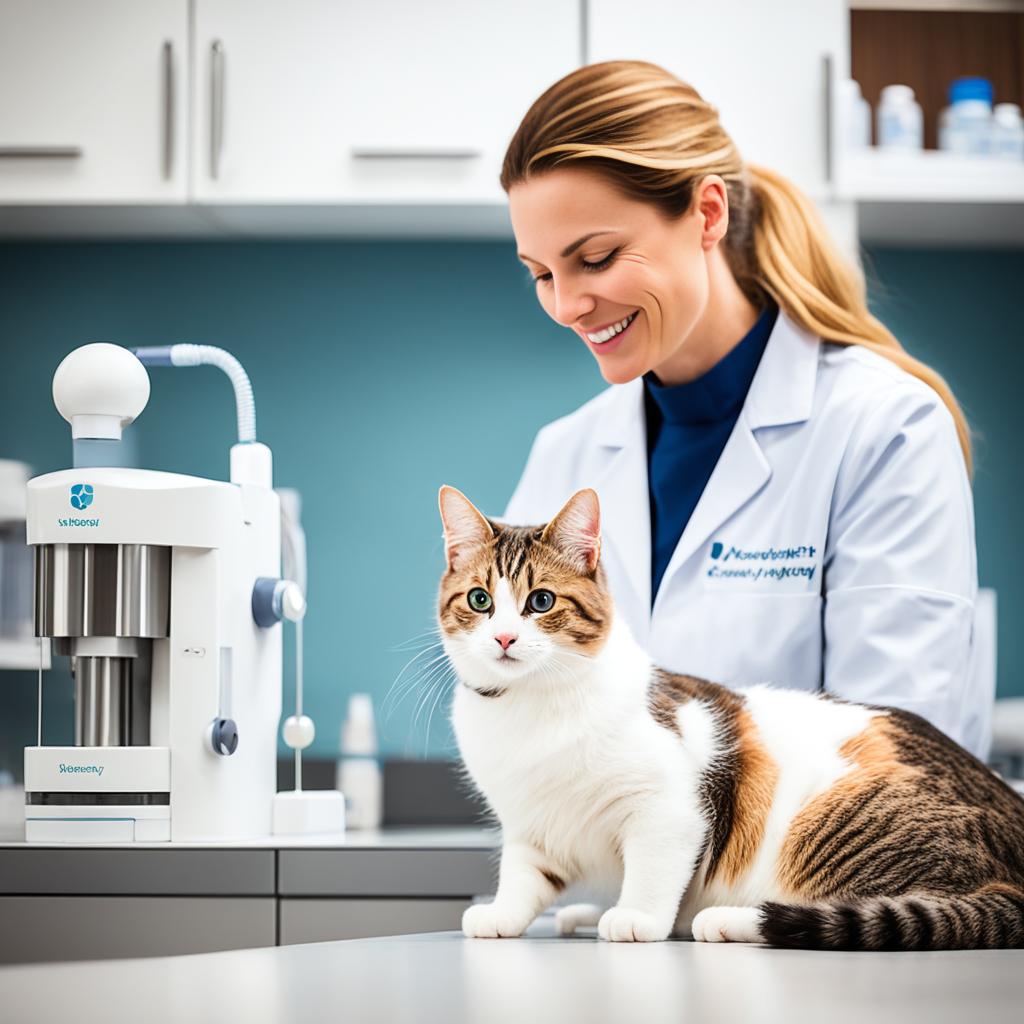
Looking after a Munchkin cat with allergies needs focus on both the vet’s advice and changing your home environment. By working closely with your vet and making some home tweaks, you can help your cat stay well and happy.
Regular Vet Visits
These visits are key for managing allergies in cats. Your vet will do check-ups often to see how your cat is doing and might change allergy treatments as needed. This constant care is vital for keeping allergy symptoms in check and avoiding serious issues.
Allergy-proofing Your Home
Making your home allergen-free can make a big difference for your Munchkin cat. Here’s what you can do:
- Swap your carpets for hardwood floors, which can help lessen allergens.
- Set up no-pet spaces to reduce allergen exposure in some parts of your home.
- Use cleaning products that fight allergens to keep your home clean.
Conclusion
Living happily with Munchkin cats, despite allergies, is possible. All it takes is knowing how to manage these allergies. Remember, no cat is completely hypoallergenic.
Making your home clean and using air purifiers helps a lot. So does keeping up with grooming. These steps reduce how much allergen you touch or breathe in.
Adding things like special bedding and diets can also help. Living with an allergic reaction to your Munchkin cat doesn’t have to be hard. Right care means more time enjoying your cat and less sneezing.
FAQ
Are Munchkin Cats hypoallergenic?
Munchkin Cats are not hypoallergenic. They make Fel d 1, an allergen in their skin, saliva, and urine. This allergen can cause problems for some people.
What are the most common allergens affecting Munchkin Cats?
Common allergens for Munchkin Cats are pollen, mold, dust mites, and certain proteins in their food.
How does the Fel d 1 protein affect allergies?
Fel d 1 causes allergies in people. Munchkin Cats produce it despite being low shedders. This allergen comes from their skin, saliva, and urine.
What are the signs of environmental allergies in Munchkin Cats?
Munchkin Cats might show skin irritation, scratch a lot, or have breathing issues like sneezing and coughing if they have allergies.
What are common food allergens for Munchkin Cats?
Food allergens can include beef, chicken, fish, and dairy in their diet. These can lead to stomach problems and skin issues in Munchkin Cats.
How can Munchkin Cats be affected by fur allergies?
Munchkin Cats get Fel d 1 in their fur from grooming. Even though they don’t shed much, their fur and dander can still cause allergies.
What are the symptoms of skin allergies in Munchkin Cats?
Skin allergies might make Munchkin Cats scratch a lot, lose hair, or have sore, red areas on their skin.
How can I tell if my Munchkin Cat has allergies?
Watch for your cat licking or scratching more. They may also avoid some places. Allergies can cause issues like red skin, sneezing, or upset stomach.
How can I test for allergies in my Munchkin Cat?
Your vet can do tests for specific allergies. Observing your cat at home can also help. See how they react to changes in their diet or environment.
How can I manage my Munchkin Cat’s allergies at home?
Keeping your home clean and using air purifiers can help. Wash your cat’s bedding often. You might also use anti-allergen sprays to reduce allergens.
What treatments are available for Munchkin Cat allergies?
Vets might recommend antihistamines or corticosteroids. Changing your cat’s diet to hypoallergenic food could also be useful.
How can I prevent allergies in my Munchkin Cat?
To prevent allergies, control your cat’s surroundings and what they eat. Use special bedding, filters, and groom your cat regularly. Also, don’t skip vet check-ups.
What long-term care strategies help manage Munchkin Cat allergies?
For long-term care, keep up with vet visits and follow their advice. A clean, allergen-aware home is important. Make areas where your cat doesn’t go to cut down on allergens.




